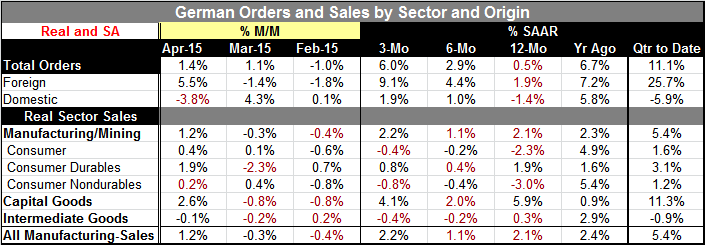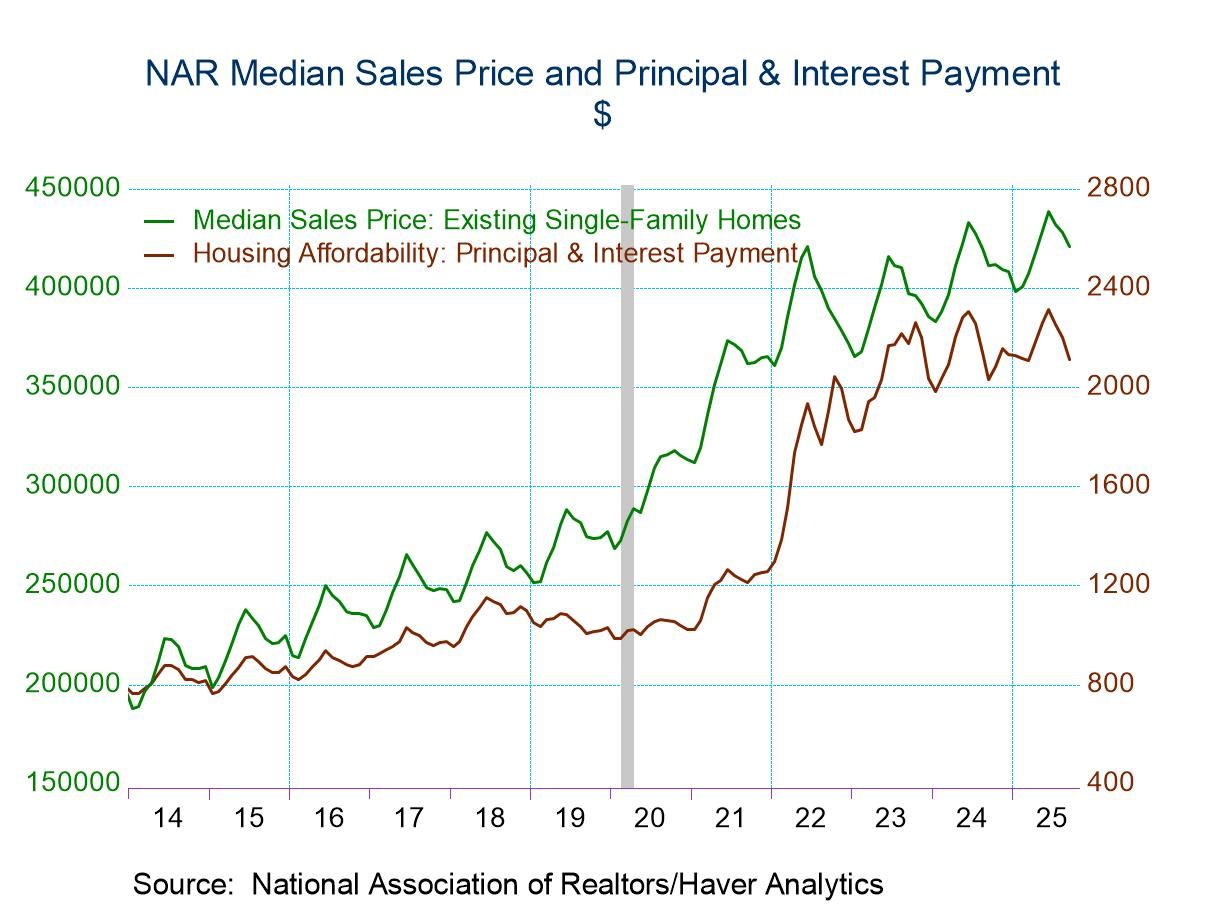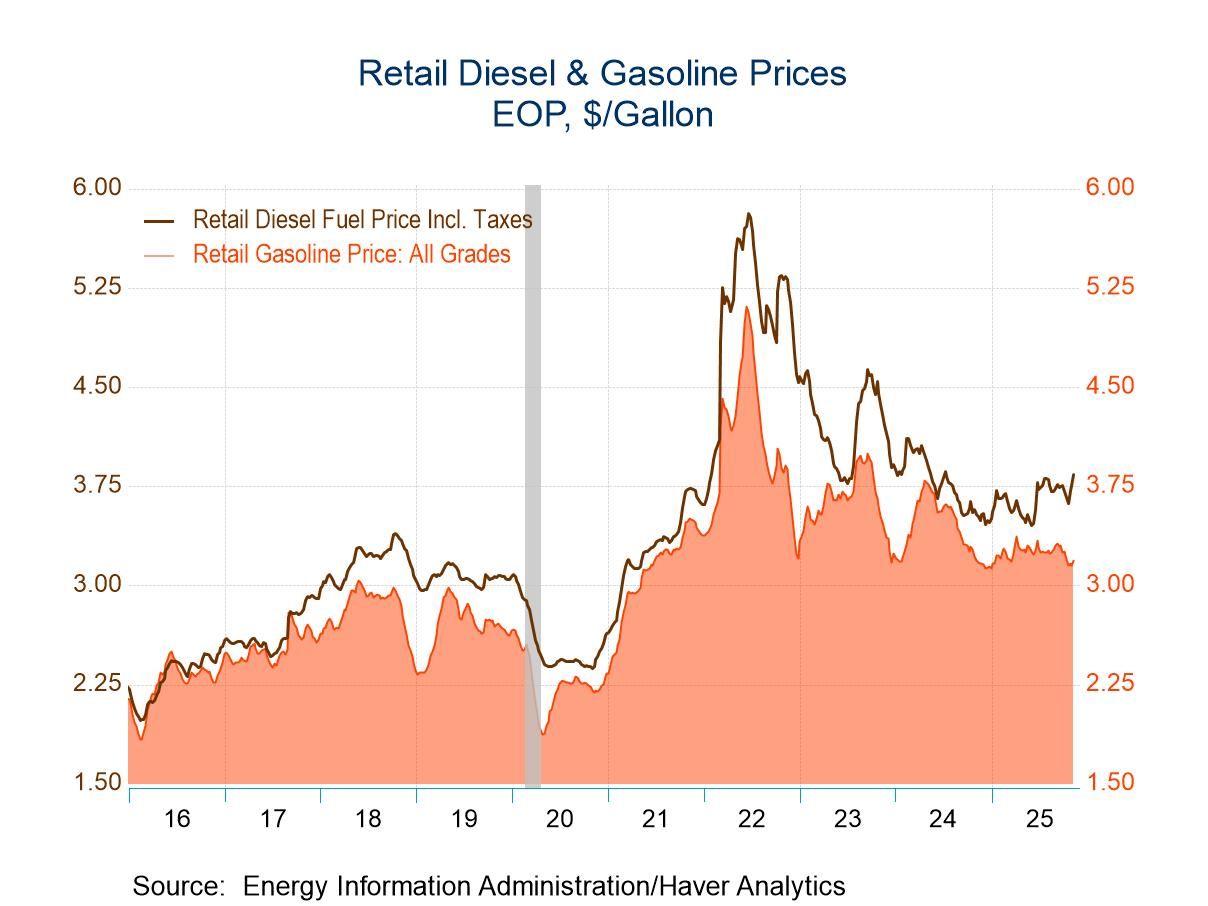 Global| Jun 05 2015
Global| Jun 05 2015German Orders Advance
Summary
German orders rose for the second consecutive month for the first time since October 2014. The rise was driven by foreign orders which gained 5.5% in April as domestic orders tanked, falling by 3.8% on the month, but that was after a [...]
 German orders rose for the second consecutive month for the first time since October 2014. The rise was driven by foreign orders which gained 5.5% in April as domestic orders tanked, falling by 3.8% on the month, but that was after a 4.3% surge in domestic orders in March.
German orders rose for the second consecutive month for the first time since October 2014. The rise was driven by foreign orders which gained 5.5% in April as domestic orders tanked, falling by 3.8% on the month, but that was after a 4.3% surge in domestic orders in March.
On balance, German orders are on an uptrend; there is s steady acceleration in growth rates from 12-month to six-month to three-month. That acceleration is present for overall orders and very strong for foreign orders. Acceleration also is engaged for domestic orders.
The sequential acceleration in German export orders is good news. However, year-over-year orders remain quite weak as the chart shows. German orders and exports have been restrained over the past year despite the weakness in the euro exchange rate. Germany has been hurt by having trading relations with Russia and China, two economics that have slowed sharply for different reasons. Still, Germany is the most competitive country in the euro area and with the euro so weak we have been expecting to see more of a pick-up in German foreign orders and exports. In this report, that sort of acceleration is on display. Foreign orders are up by only 1.9% year-over-year but are rising at a 9.1% annual rate over three months. In the quarter to date, foreign orders are up at a 25.7% annual rate. Of course, that is not a robust number just yet, as April is only the first month of the new quarter. Still, the strength is suggestive.
German real sector sales do not yet show much sign of strength. Overall manufacturing and mining sector sales are flat with growth rates of around 2%. However, capital goods sales show more life with growth hovering between 2% and 6% depending on the horizon.
The Bundesbank has just lifted its outlook for growth over the year ahead. German unemployment continues to fall and unemployment in the whole of the euro area is falling as well. There are signs here of the economy doing better and of a better growth context for Europe. But for now German growth is concentrated in the foreign sector. The foreign order strength has not ignited domestic orders although domestic orders are accelerating from a weak base of growth.

Robert Brusca
AuthorMore in Author Profile »Robert A. Brusca is Chief Economist of Fact and Opinion Economics, a consulting firm he founded in Manhattan. He has been an economist on Wall Street for over 25 years. He has visited central banking and large institutional clients in over 30 countries in his career as an economist. Mr. Brusca was a Divisional Research Chief at the Federal Reserve Bank of NY (Chief of the International Financial markets Division), a Fed Watcher at Irving Trust and Chief Economist at Nikko Securities International. He is widely quoted and appears in various media. Mr. Brusca holds an MA and Ph.D. in economics from Michigan State University and a BA in Economics from the University of Michigan. His research pursues his strong interests in non aligned policy economics as well as international economics. FAO Economics’ research targets investors to assist them in making better investment decisions in stocks, bonds and in a variety of international assets. The company does not manage money and has no conflicts in giving economic advice.






